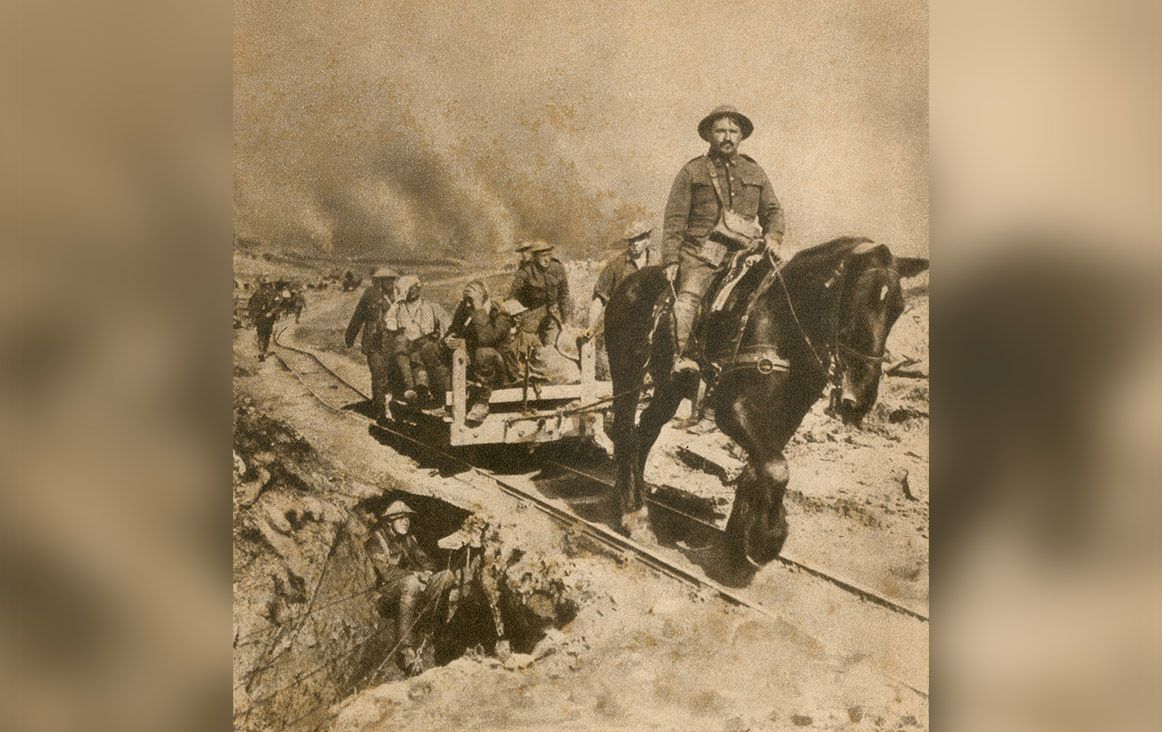Let us also remember the many mares and stallions that aided soldiers and served their country during both world wars and those who came after.

Motor vehicles of the early 20th century were no match for horses when it came to rough terrains and cross-country mobility.
That’s why so many horses were utilized during those conflicts, and have been a part of warfare for thousands of years.
Staggering costs and amounts of time dedicated to feeding and grooming these majestic military soldiers were often not ideal.
The makeshift lodging soldiers would have to sometimes create for their equine comrades, and the scarcity of proper fodder would sometimes lead to poor health or disease.
This often meant new frontline horse units would have to be refit, which could sometimes slow down operations.
But, overall, the positive contribution horses brought during this time outweighed the extra bit of TLC they needed.

During the First World War, more than 23,000 horses from the Canadian Corps alone were required to carry soldiers. They worked behind the lines pulling guns, ammunition, supplies and casualties.
According to the Royal Canadian Artillery Museum, from 1914 to 1918, more than 480,000 horses died in military service.
Horses played the same role once again when the Second World War erupted in 1939, but this time to a lesser extent, with improvements to motor vehicles being on the rise.
The number of horses who died during that war is unknown, but is estimated to be in the millions.

Many have probably seen Steven Spielberg’s touching 2011 film War Horse, which tells the story of a horse shipped to France from England.
In fact, we have a few famous Canadian war horses from the east coast and many others nationwide that made that same trip to France in 1915.
Morning Glory of Brome County, Que., and Bunny with the Toronto Battery are two of Canada’s most noted military mares who were shipped to France.
Columbia Basin records show that in April 1915, a Dominion government representative visited the unceded territories of the Secwépemc and Ktunaxa Peoples, plus land chosen as home by the Metis Peoples of B.C. to purchase several war horses in Fort Steele and Cranbrook.

Millions upon millions of horses have shown bravery, endurance, and strength during times of war.
A fun fact is that one made sergeant. Serving in the Korean War, a Mongolian mare was given the name Reckless for her fearless nature. She sustained multiple injuries, but never shunned her workload of carrying soldiers and gear.
Reckless was commended for 51 solo rides she gave in one day during the battle for Outpost Vegas in 1953, and was given the rank of sergeant before retiring in 1954. She held this great honour as a veteran of the Korean War and died in 1968.
Lest we forget all the countless horses, as well as mules and donkeys, who lived shorter and more stressful lives to be of service in both world wars.
This story first appeared on the Columbia Valley Pioneer’s website.




Comments